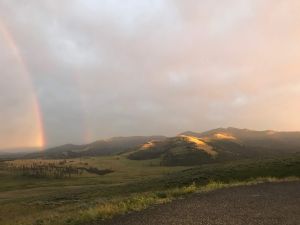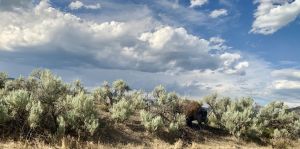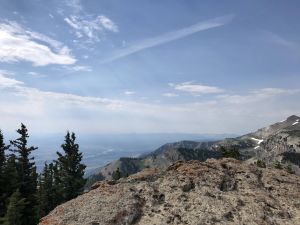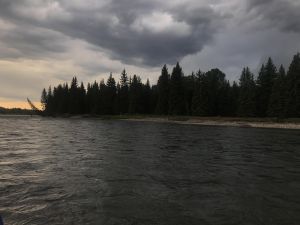A few weeks before the semester started, my family took a trip to Yellowstone National Park and Grand Teton National Park. Our last family trip was spent hiking in the Great Smoky Mountains National Park.
We love exploring national parks, because the land that people all across the country work tirelessly to preserve and protect is so beautiful.
While visiting Yellowstone National Park in Montana, the weather was a perfect 70 degrees and sunny for the most part, but some rain showers brought a few amazing rainbows scattered around the mountains.

The park is most famous for its most reliable geyser, nicknamed Old Faithful, which is bound to erupt every half hour or so. People from all over gathered around to watch the geyser erupt and shoot lava-hot water high up in the air for around five minutes.
Yellowstone also has the largest bison population on public land. Bison feed mostly on grass and are usually found in herds. People are able to get the closest possible view of these mammals while still remaining at a safe distance. The bison got extremely close to our car, so being right next to an entire herd of animals was a really cool experience.

While visiting Grand Teton National Park in Wyoming, the weather was slightly different than in Montana.
Hiking in cold conditions with snow on the ground was something my family had never done before! We definitely pulled out the beanies and sweatshirts for that part of our trip. The rapid change of weather was really unique, because we did not know what season it felt like outside until we woke up each morning.

Corbet’s Cabin Top of the World Waffles is a great place to grab some breakfast at the top of the Grand Tetons. We took a ski lift up the mountain, ate some delicious food and hiked a few trails.
Once we got back down, we went rafting down the Snake River, one of the major rivers in the park. We spotted a lot of badgers and bald eagles,and saw a couple moose. Thankfully, the only snake we saw that day was on the sign for the river.

The most interesting thing about our trip was how different the environment is out west. While rafting down the Snake River, the water was crystal clear. Clean water and amazing air quality made spending a week outdoors very beautiful. Vegetation looked healthier and the animals seemed happier. The environment made it seem like pollution and climate change has not caught up yet with everything out west as much as it has back home.
Protecting national parks
The urgency to protect this land from current threats is a problem facing national parks all across the United States.
The biggest threat is climate change. Some other threats to national parks include: air pollution, endangered wildlife, invasive species, water shortages, budget problems, mining and drilling.
Climate change
According to a climate brochure provided by the National Park Service, warmer winters and longer melt seasons have increased the rate of glacial retreat in two of Alaska’s national parks. By the year 2030, it is estimated that most of Montana’s Glacier National Park will be gone.
Rising sea level may prevent saltwater from being filtered out at Everglades National Park, harming communities of trees. Floods and fires have destroyed historical sites at national parks throughout the state of Colorado.
Arguably the most beloved park in the U.S., Yosemite National Park is facing serious threats from warming temperatures. The pika population uses the cool mountains as their habitat, but with the mountains slowly shifting upslope, these small mammals may be facing extinction.
Attacks from the federal government
President Trump issued an executive order to review the importance of around 30 national monuments in April 2017. According to the National Parks Conservation Association, a president cannot abolish or remove protections from national monuments.
Trump proposed a budget that would cut the Land and Wildlife Conservation Fund by over 90 percent the following February.
Government shutdown
The National Park Service lost $400,000 day during the government shutdown earlier this year. More than 290 million people visited national parks in 2014, a statistic taken from DoSomething.org. The lack of staffing slowed down search and rescue efforts in parks everywhere, potentially endangering the lives of all visitors. Also, around 16,000 employees of the parks were without work as a result of the shutdown.
Border problems
Most recently, the construction of Trump’s border wall will damage many archaeological sites. Earlier this month, the National Park Service found that 17 sites will be destroyed from the construction.
For more information on national parks in the United States, visit https://www.nps.gov/index.htm.


